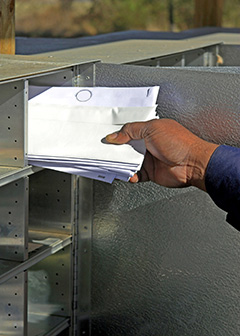Summary

| Quick Facts: Postal Service Workers | |
|---|---|
|
$53,090 per year
$25.52 per hour |
|
| High school diploma or equivalent | |
| None | |
| Short-term on-the-job training | |
| 524,200 | |
| -26% (Decline rapidly) | |
| -138,600 | |
What Postal Service Workers Do
Postal Service workers sell postal products and collect, sort, and deliver mail.
Work Environment
Postal Service clerks and mail sorters, processors, and processing machine operators work indoors, typically in a post office. Mail carriers mostly work outdoors, delivering mail.
How to Become a Postal Service Worker
Although there is no specific postsecondary education requirement to become a Postal Service worker, all applicants for these jobs must take an exam.
Pay
The median annual wage of Postal Service workers was $53,090 in May 2010.
Job Outlook
Overall employment of Postal Service workers is expected to decline 26 percent from 2010 to 2020. Automated sorting systems, cluster mailboxes, and tight budgets will adversely affect employment. Very strong competition is expected for all jobs, as the number of applicants typically is greater than the number of available positions.
Similar Occupations
Compare the job duties, education, job growth, and pay of postal service workers with similar occupations.
O*NET
O*NET provides comprehensive information on key characteristics of workers and occupations.
Contacts for More Information
Learn more about postal service workers by contacting these additional resources.






